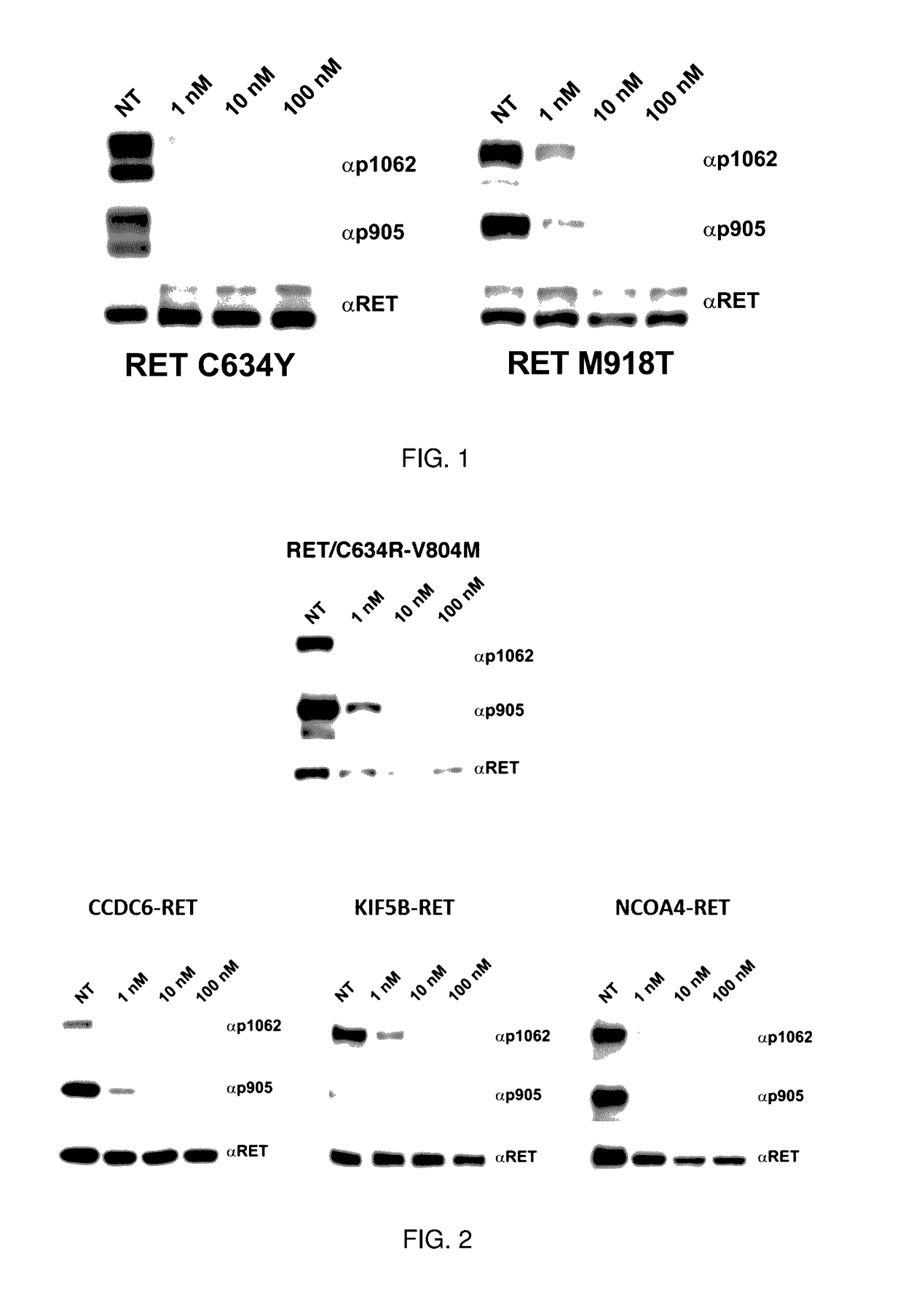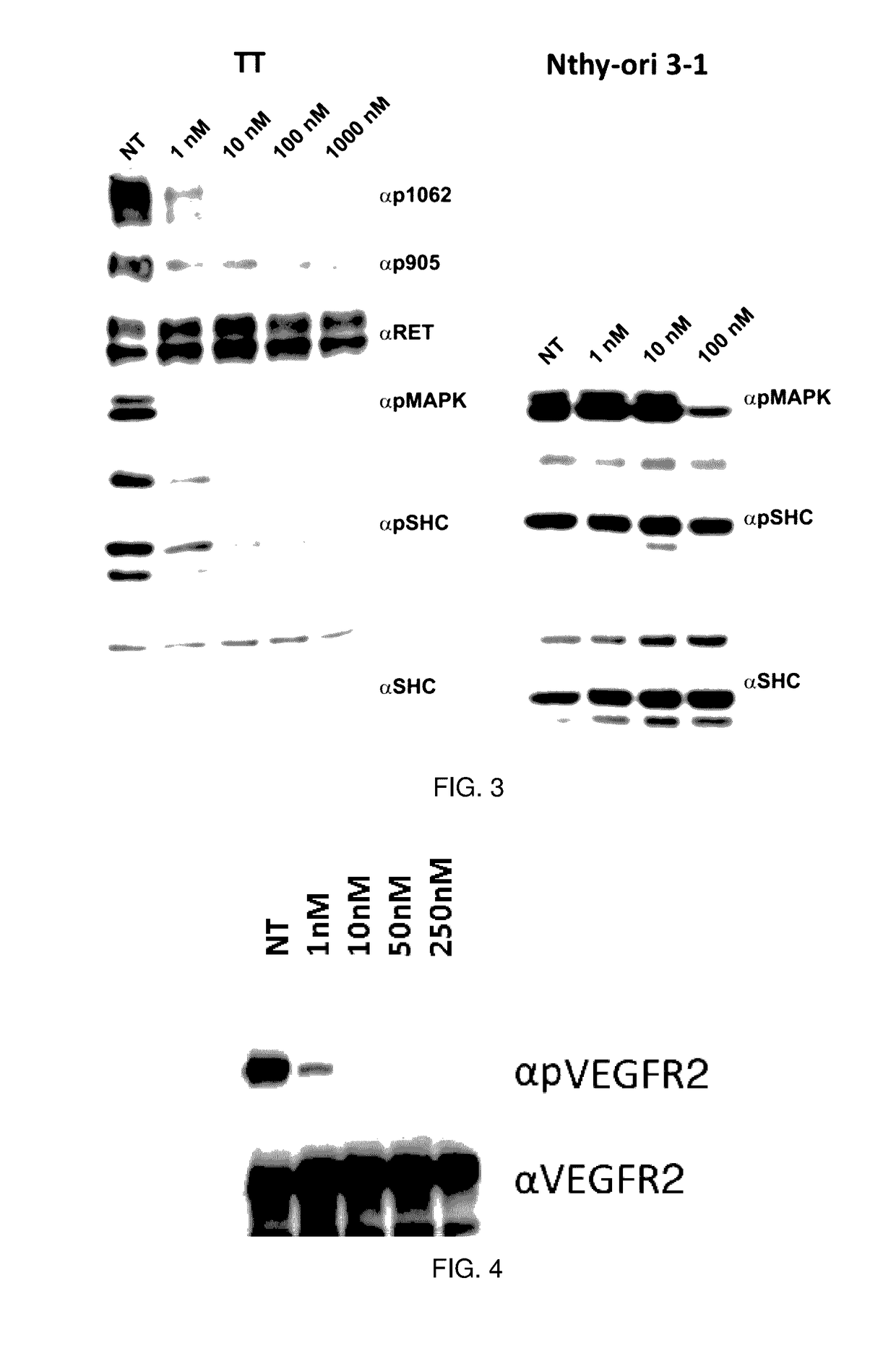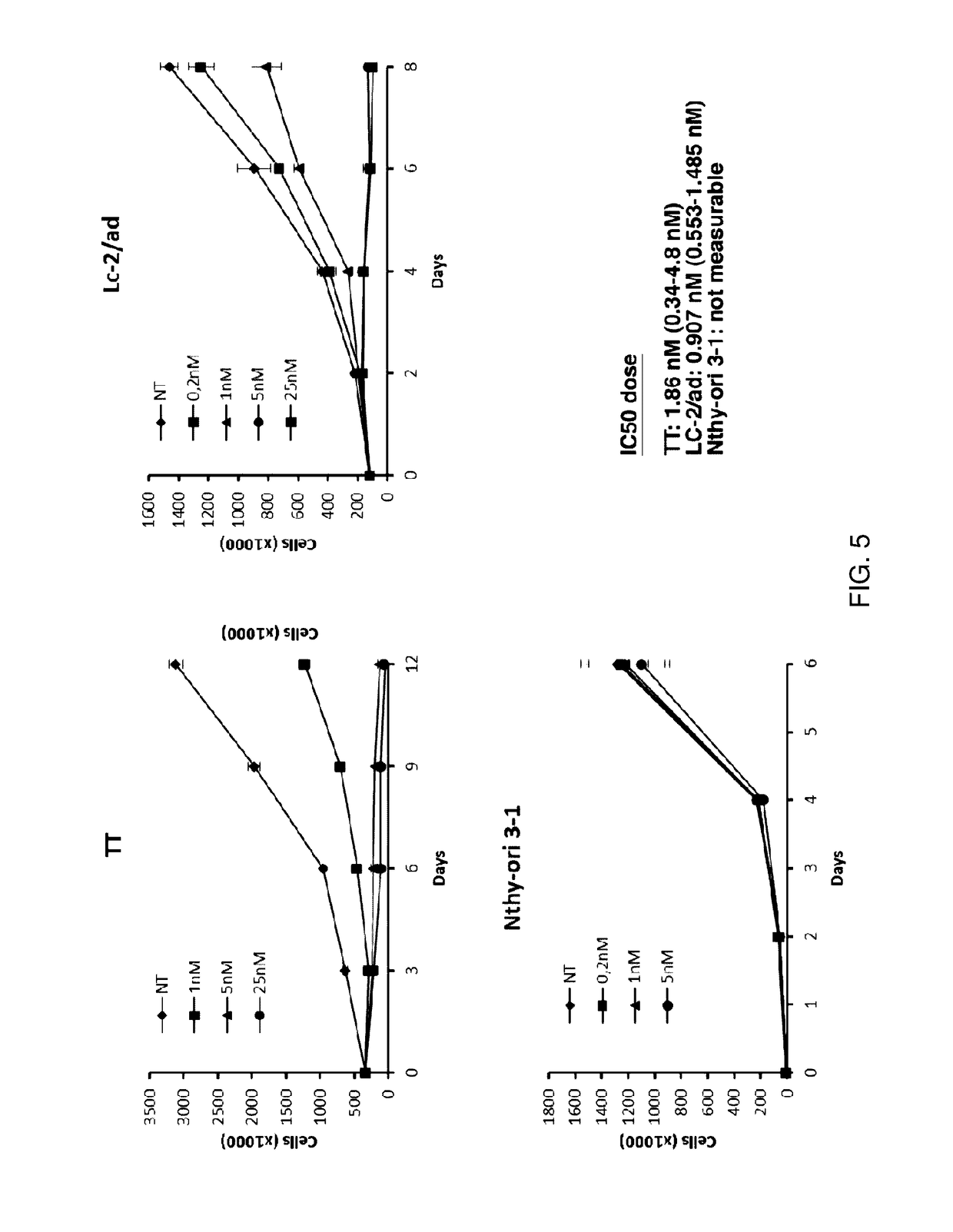Benzimidazole analogues and related methods
a technology of benzimidazole and analogues, applied in the field of benzimidazole analogues, can solve the problems of unmet treatment needs of radioactive refractory ptc disease, poor efficacy of conventional systemic treatment of mtc, and suboptimal survival, so as to inhibit cell proliferation and inhibit phosphorylation
- Summary
- Abstract
- Description
- Claims
- Application Information
AI Technical Summary
Benefits of technology
Problems solved by technology
Method used
Image
Examples
example 1
Preparation 1—Preparation of Forumula III
[0116]Ethyl 4-aminophenyl acetate (3.67 g, 20.45 mmol) was added to a 20 mL microwave vial along with 4-bromo-1-fluoro-2-nitrobenzene (3.00 g, 13.64 mmol) and DMA (10 mL). The reaction mixture was sealed and placed under microwave irradiation for 30 minutes at 160° C. Water was added to the crude reaction mixture and the product was extracted with EtOAc. The organic extract was washed with brine 1×, acidified water (pH ˜4) 2×, and brine 2×. The organic layer was collected then dried with MgSO4. The concentrated crude was purified using flash chromatography with hexanes / EtOAc to afford ethyl 2-(4-((4-bromo-2-nitrophenyl)amino)phenyl)acetate 3 as a blood-red oil (4.2 g, 81%). ESMS m / z 379 (M+H)+. The structure of ethyl 2-(4-((4-bromo-2-nitrophenyl)amino)phenyl)acetate (Formula III) is depicted below:
example 2
Preparation 2—Preparation of Formula IV
[0117]Ethyl 2-(4-((4-bromo-2-nitrophenyl)amino)phenyl)acetate (2.026 g, 5.34 mmol) was placed into a 100 mL round bottom flask. EtOH (20 mL) and zinc (3.49 g, 53.4 mmol) were added into the flask, and the reaction mixture was then cooled in an ice bath. Acetic acid (2.246 g, 37.4 mmol) was diluted with EtOH (10 mL), and then added dropwise into the reaction mixture over course of 1 h. The reaction mixture was stirred at 0° C. for 5 h, then filtered and the EtOH evaporated. The reaction mixture was basified with aqueous NaHCO3 and the product was extracted with diethyl ether. The reaction mixture was washed 3× with aqueous NaHCO3 and the organic layer was collected. The organic layer was dried with MgSO4, and the solvent was evaporated to yield ethyl 2-(4-((2-amino-4-bromophenyl)amino)phenyl)acetate 4 as a slight purple solid (1.834 g, 98%). ESMS m / z 349 (M+H)+. The structure of ethyl 2-(4-((2-amino-4-bromophenyl)amino)phenyl)acetate (Formula IV...
example 3
Preparation 3—Preparation of Formula V
[0118]Ethyl 2-(4-((2-amino-4-bromophenyl)amino)phenyl)acetate (2 g, 5.73 mmol), as prepared above, was placed into a 50 mL round bottle flask. TMOF (15 mL) was added into the flask, followed by pTSA (0.109 g, 0.573 mmol). The reaction mixture was stirred at RT for 3 h. The excess solvent was evaporated and the reaction mixture was washed with aqueous NaHCO3. The product was extracted with ether and the organic layer was washed 2× with aqueous NaHCO3 and 1× with brine. The organic layer was collected, dried, and condensed to yield ethyl 2-(4-(5-bromo-1H-benzo[d]imidazol-1-yl)phenyl)acetate 5 as a brown solid (2.04 g, 99%). ESMS m / z 359 (M+H)+. The structure of ethyl 2-(4-(5-bromo-1H-benzo[d]imidazol-1-yl)phenyl)acetate (Formula V) is shown below:
PUM
| Property | Measurement | Unit |
|---|---|---|
| Composition | aaaaa | aaaaa |
| Inhibition | aaaaa | aaaaa |
Abstract
Description
Claims
Application Information
 Login to View More
Login to View More - R&D
- Intellectual Property
- Life Sciences
- Materials
- Tech Scout
- Unparalleled Data Quality
- Higher Quality Content
- 60% Fewer Hallucinations
Browse by: Latest US Patents, China's latest patents, Technical Efficacy Thesaurus, Application Domain, Technology Topic, Popular Technical Reports.
© 2025 PatSnap. All rights reserved.Legal|Privacy policy|Modern Slavery Act Transparency Statement|Sitemap|About US| Contact US: help@patsnap.com



